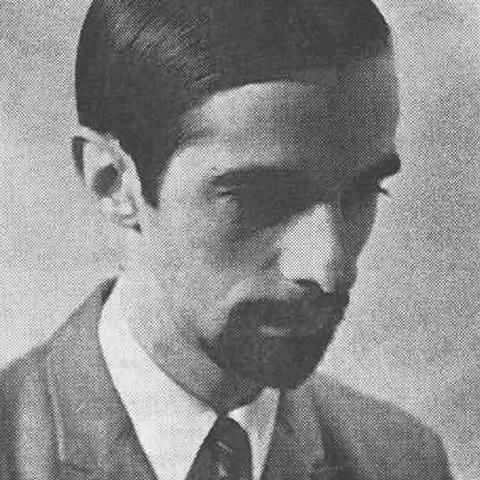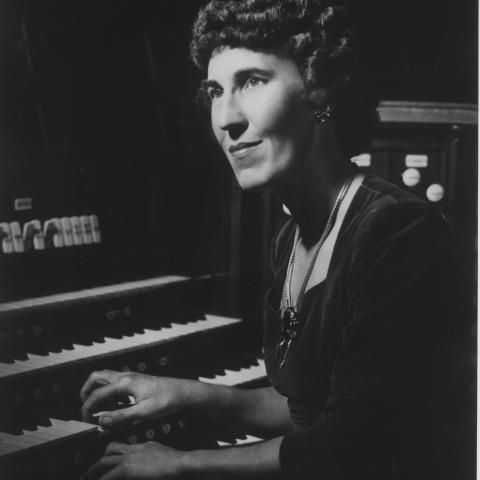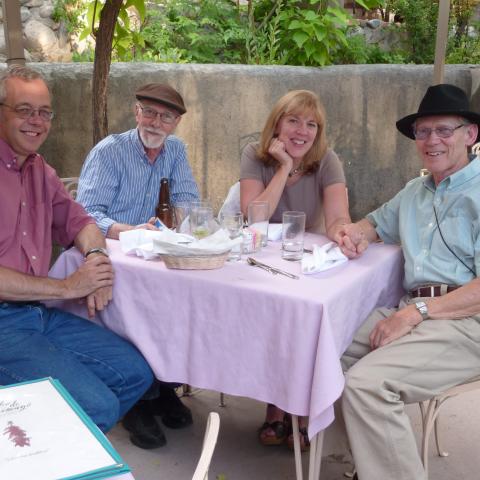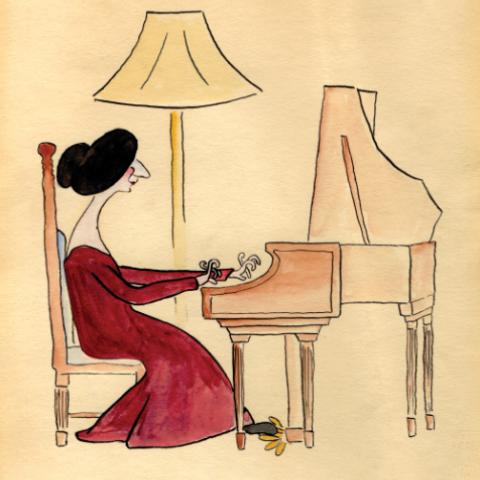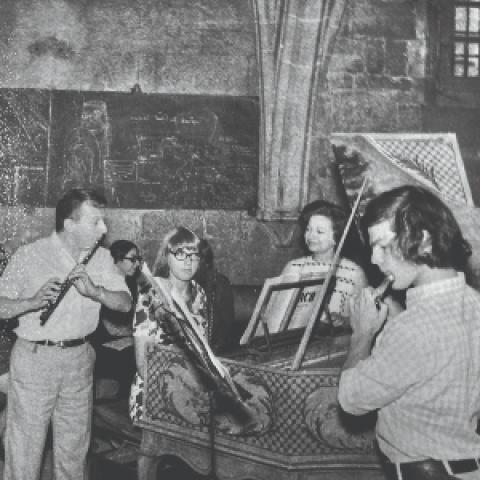
The Diapason harpsichord columns history
Part II: Front-page features
The magazine’s third editor Robert Schuneman made harpsichord history when he placed my report on the Bruges [Belgium] International Harpsichord Competition and Festival on the front page of the October 1971 issue. To my knowledge this was the first time a non-organ-related item had appeared in that prominent spot! There were two black-and-white photographs: at the top of the page, the first prize winner, Scott Ross from the United States playing a harpsichord by David Rubio, and at the bottom, a picture of the very distinguished and very international jury: Kenneth Gilbert, Raymond Schroyens, Colin Tilney, Charles Koenig, Robert Veyron-Lacroix, Isolde Ahlgrimm, and Gustav Leonhardt, plus the director of the festival, Robrecht Dewitte, surrounding an instrument by Rainer Schuetze. The report continued on page 10, graced with one more illustration—the semi-finalists, a truly international group from the UK, Netherlands, France, Chile, Ceylon, Hong Kong, Italy, Canada, and two from the United States.
Front page #2: I returned to Bruges for the fourth competition in July 1974. Again, Editor Schuneman placed the report of that event on the front page of October’s magazine, and it was just as eye-catching as the first feature, with three photographs. (A young Martin Pearlman is the first figure on the left of the middle picture.) My lengthy article continued without illustrations, on pages 3 and 4.
As had become usual for the Bruges event by this time, the harpsichord solo competition was not graced with a first prize. The five finalists garnered awards beginning with a second prize, continuing with two sharing the third spot, and one each in fourth and fifth rankings. I noted that none of the players had reached the electrifying level of playing achieved by Scott Ross in 1971. The most popular harpsichord chosen by the contestants was a harpsichord by William Dowd, built in his Paris workshop.
Front page #3: The Diapason published in July 1978 displayed David Fuller’s fascinating and erudite article “Harpsichord Registration” on page one, courtesy of Editor Arthur Lawrence. The front page sported a two-column-wide facsimile of the first page from Armand-Louis Couperin’s Simfonie de Clavecins. Fuller’s comprehensive traversal of this most interesting topic continued on pages 6 and 7, illustrated with a diagram of knee levers, two further musical manuscript examples by C. P. E. Bach, and a useful bibliography for further study of this topic. As an additional bit of nostalgia, page 7 also had an advertisement for Richard Kingston harpsichords; at this time Richard was still in his first decade of building fine instruments in his Dallas, Texas, shop.
Front page #4: Editor Lawrence chose my “Affectionate Remembrance” of the late E. Power Biggs for the cover feature of March 1979’s journal, resplendent with a large photograph of the master organist and his pedal harpsichord. I just happened to be at harpsichord maker John Challis’s home one afternoon during the 1960 American Guild of Organists national convention in Detroit. I was playing some Bach on Challis’s prototype pedal harpsichord when EPB arrived to try the instrument. Removing his shoes, he sat down to try it. The result, of course, became harpsichord history: Biggs ordered one on the spot and subsequently recorded several discs, ranging from popular musical favorites such as Saint-Saens’ The Swan to a full set of all six Bach trio sonatas on the newly acquired instrument.
Front page #5: In July 1979 there was much international celebration of Wanda Landowska’s centenary. Editor Arthur Lawrence agreed that we should join that observance, and that we needed to contact Landowska’s longtime companion and current resident of the pioneering harpsichordist’s last home in Lakeville, Connecticut, to ascertain if she might write a feature article for us. Denise Restout responded favorably, but informed us that she would need to be reimbursed for such a task. Since no contributors to The Diapason were paid at that point in its history, Arthur and I each contributed her fee from our own funds, and the magazine was well served! Ms. Restout not only provided the feature article for the front page (continued on pages 12–15), but she insisted, since she did not trust a young Pleyel harpsichord owner in Texas to write a proper description of such an instrument, that she herself should write that short but necessary article as well (pages 16–17).
Other featured articles included “Reminiscences of St. Leu” by Momo Aldrich, Landowska’s first private secretary, whom I met and interviewed extensively during many annual winter trips to visit her in Honolulu, where she had settled to be close to her daughter and grandchildren (pages 3 and 8). I contributed an extensive article about the two Landowska-inspired harpsichord concerti by Falla and Poulenc (pages 9–11) and the introduction on page 2 (“Happy Birthday, Wanda”). The result: Landowska was celebrated on thirteen of the twenty-four pages in our July publication.
Front page #6: Well, half a front page, actually. My report, “The Harpsichord at the Boston Early Music Festival and Exhibition,” shared the front page for August 1981 with Editor Arthur Lawrence’s report on the Montreal Organ Conference, “L’Orgue à notre époque.” And he had an organ photo! My report managed to display some harpsichord soundboard rosettes, reprinted by permission from the festival program book, as well as portraits of the two outstanding harpsichord recitalists on page 3: John Gibbons and Ralph Kirkpatrick.
Front page #7: A true festschrift to celebrate the seventieth birthday of master harpsichord builder William Dowd appeared in February 1992. By this time The Diapason sported actual front covers, which in this case featured a montage of four Dowd harpsichords (German, French, and Franco-Flemish doubles and a French single), with the builder’s King David and his harp logo in the middle of the very attractive layout approved by Editor Jerome Butera.
The idea for the celebratory edition was suggested by Dowd’s wife Pegram (Peggy) in conversation with me at a Southeastern Historical Keyboard Society (SEHKS) conference. She was a great help with contacts to the contributors, and together we assembled vignettes from fellow Coast Guard serviceman Fenner Douglass (who after World War II service became a much sought-after Oberlin Conservatory organ professor, and later, at Duke University), Dowd owners Albert Fuller, Frederick Hyde, David Fuller, Miles Morgan, Robin Anderson, Dowd shop foreman and distinguished jazz harpsichordist Donald Angle, soundboard painter Sheridan Germann, John Fesperman of the Smithsonian Institution, William Christie (who, having moved to France to “restore French Baroque opera to the French,” provided me with my first fax experience), Arthur Haas, Dirk Flentrop, Thomas and Barbara Wolf, Glenn Spring, and Gustav Leonhardt. A specially made caricature was created by Jane Johnson.
All these varied glimpses into Dowd’s life and legacy are fascinating, and they comprise a major contribution to the modern history of the American (and Parisian) development of harpsichords based on historic models. The last two, however, provide unique offerings: from composer Glenn Spring, a complete score of his winning Aliénor competition composition from 1990—William Dowd: His Bleu, the full score of which is included (centerfold, full size, four pages), referencing Dowd and Angle’s improvisations in the Cambridge shop as well as the color of the new Dowd at Walla Walla College where the composer was teaching at the time. It was a first for the harpsichord submissions to the magazine, but one that has been followed by at least one more harpsichord piece (Mulet’s Petite Lied).
All these tributes required ten pages, with another published a year later (February 1993) when the honoree contributed his one-page response, which the magazine graced with a second Jane Johnson caricature plus three photos of the honoree.
To end on a very high note, here is a sample of Gustav Leonhardt’s tribute:
Dowland and Purcell choosing their texts with William Dowd in mind
O how happy’s he, who from bus’ness free
Music for a while (Yes, a very good while,—since 1949)
While bolts and bars my days control[ed] (The last two letters added by the editor make comment superfluous)
From silent night (Only since acquiring a telephone answering machine)
If my complaints could passions move (Deliver them at No. 100) . . .
If music be the food of love (Eat on) . . .
Flow my tears (For good humidification)
Lachrimae (The same, for another kind of customer) . . . .
For the rest of the text, consult page 20, The Diapason, February 1992, available at www.thediapason.com.
Editor’s note: all of the issues mentioned in Dr. Palmer’s column are available at our website, www.thediapason.com. Near the top left of the home page, click on “Magazine.” Under “Magazine Archive” on the next page, type the year desired and click “Apply.” The available months of that year’s issues will then appear. Click on the desired issue, and on the following page, click on PDF.

